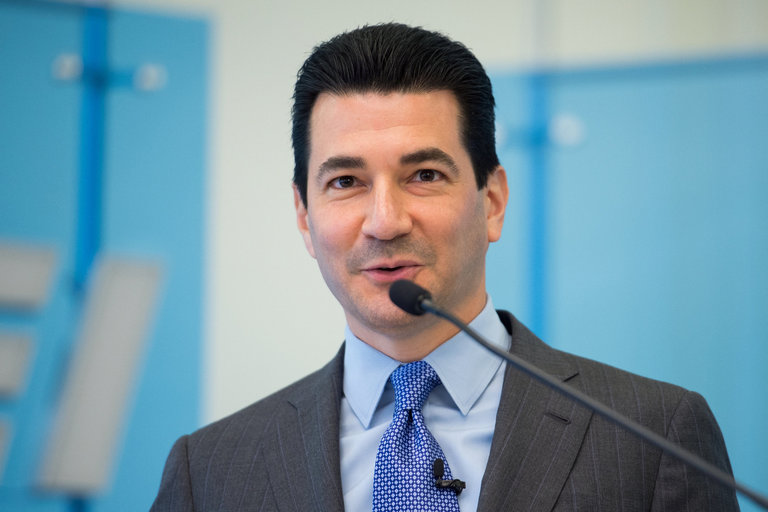When the “21st Century Cures Act” was enacted in December, 2016 —over the eloquent opposition of Senator Elizabeth Warren— the NY Times story included an intriguing sentence:
“In considering whether to approve new drugs or new uses for medications, the bill says, the F.D.A. shall pay more attention to ‘patient experience data’ showing the impact of a disease or treatment on patients’ lives, and their treatment preferences.
Paying attention to ‘patient experience data’ is what cannabis specialists do, and getting the biomedical establishment to respect Clinical Evidence has been a primary goal of the Society of Cannabis Clinicians. So we searched the text of the bill for the wording of this seemingly sensible step. What we found was a roadmap for bureaucratic delay. The Act gives the Health & Human Services Secretary two or three years to create a mechanism for receiving “patient experience data.” It seems exceedingly odd that physicians and nurses are not listed among the parties collecting such data and participating in the relevant workshops. Big PhRMA wins again:
TITLE II—DEVELOPMENT
Subtitle A—Patient-Focused Drug DevelopmentSEC. 2001. DEVELOPMENT AND USE OF PATIENT EXPERIENCE DATA TO ENHANCE STRUCTURED RISK-BENEFIT ASSESSMENT FRAMEWORK.(a) In General.—Section 505 of the Federal Food, Drug, and Cosmetic Act (21 U.S.C. 355) is amended—
(1) in subsection (d), by striking “The Secretary shall implement” and all that follows through “premarket approval of a drug.”; and
(2) by adding at the end the following new subsections:
“(x) Structured Risk-Benefit Assessment Framework.—
“(1) IN GENERAL.—The Secretary shall implement a structured risk-benefit assessment framework in the new drug approval process—
“(A) to facilitate the balanced consideration of benefits and risks; and
“(B) to develop and implement a consistent and systematic approach to the discussion of, regulatory decisionmaking with respect to, and the communication of, the benefits and risks of new drugs.
“(2) RULE OF CONSTRUCTION.—Nothing in paragraph (1) shall alter the criteria for evaluating an application for premarket approval of a drug.
“(y) Development And Use Of Patient Experience Data To Enhance Structured Risk-Benefit Assessment Framework.—
“(1) IN GENERAL.—Not later than 2 years after the date of the enactment of this subsection, the Secretary shall establish and implement processes under which—
“(A) an entity seeking to develop patient experience data may submit to the Secretary—
“(i) initial research concepts for feedback from the Secretary; and
“(ii) with respect to patient experience data collected by the entity, draft guidance documents, completed data, and summaries and analyses of such data;
“(B) the Secretary may request such an entity to submit such documents, data, and summaries and analyses; and
“(C) patient experience data may be developed and used to enhance the structured risk-benefit assessment framework under subsection (x).
“(2) PATIENT EXPERIENCE DATA.—In this subsection, the term ‘patient experience data’ means data collected by patients, parents, caregivers, patient advocacy organizations, disease research foundations, medical researchers, research sponsors, or other parties determined appropriate by the Secretary that is intended to facilitate or enhance the Secretary’s risk-benefit assessments, including information about the impact of a disease or a therapy on patients’ lives.”.
(b) Guidance.—
(1) IN GENERAL.—The Secretary of Health and Human Services shall publish guidance on the implementation of subsection (y) of section 505 of the Federal Food, Drug, and Cosmetic Act (21 U.S.C. 355), as added by subsection (a). Such guidance shall include—
(A) with respect to draft guidance documents, data, or summaries and analyses submitted to the Secretary under paragraph (1)(A) of such subsection, guidance—
(i) specifying the timelines for the review of such documents, data, or summaries and analyses by the Secretary; and
(ii) on how the Secretary will use such documents, data, or summaries and analyses to update any guidance documents published under this subsection or publish new guidance;
(B) with respect to the collection and analysis of patient experience data (as defined in paragraph (2) of such subsection (y)), guidance on—
(i) methodological considerations for the collection of patient experience data, which may include structured approaches to gathering information on—
(I) the experience of a patient living with a particular disease;
(II) the burden of living with or managing the disease;
(III) the impact of the disease on daily life and long-term functioning; and
(IV) the effect of current therapeutic options on different aspects of the disease; and
(ii) the establishment and maintenance of registries designed to increase understanding of the natural history of a disease;
(C) methodological approaches that may be used to assess patients’ beliefs with respect to the benefits and risks in the management of the patient’s disease; and
(D) methodologies, standards, and potential experimental designs for patient-reported outcomes.
(2) TIMING.—Not later than 3 years after the date of the enactment of this Act, the Secretary of Health and Human Services shall issue draft guidance on the implementation of subsection (y) of section 505 of the Federal Food, Drug, and Cosmetic Act (21 U.S.C. 355), as added by subsection (a). The Secretary shall issue final guidance on the implementation of such subsection not later than 1 year after the date on which the comment period for the draft guidance closes.
(3) WORKSHOPS.—
(A) IN GENERAL.—Not later than 6 months after the date of the enactment of this Act and once every 6 months during the following 12-month period, the Secretary of Health and Human Services shall convene a workshop to obtain input regarding methodologies for developing the guidance under paragraph (1), including the collection of patient experience data.
(B) ATTENDEES.—A workshop convened under this paragraph shall include—
(i) patients;
(ii) representatives from patient advocacy organizations, biopharmaceutical companies, and disease research foundations;
(iii) representatives of the reviewing divisions of the Food and Drug Administration; and
(iv) methodological experts with significant expertise in patient experience data.
(4) PUBLIC MEETING.—Not later than 90 days after the date on which the draft guidance is published under this subsection, the Secretary of Health and Human Services shall convene a public meeting to solicit input on the guidance.
Today’s NYT included a profile of Scott Gottleib, MD, the incoming FDA Commissioner.





